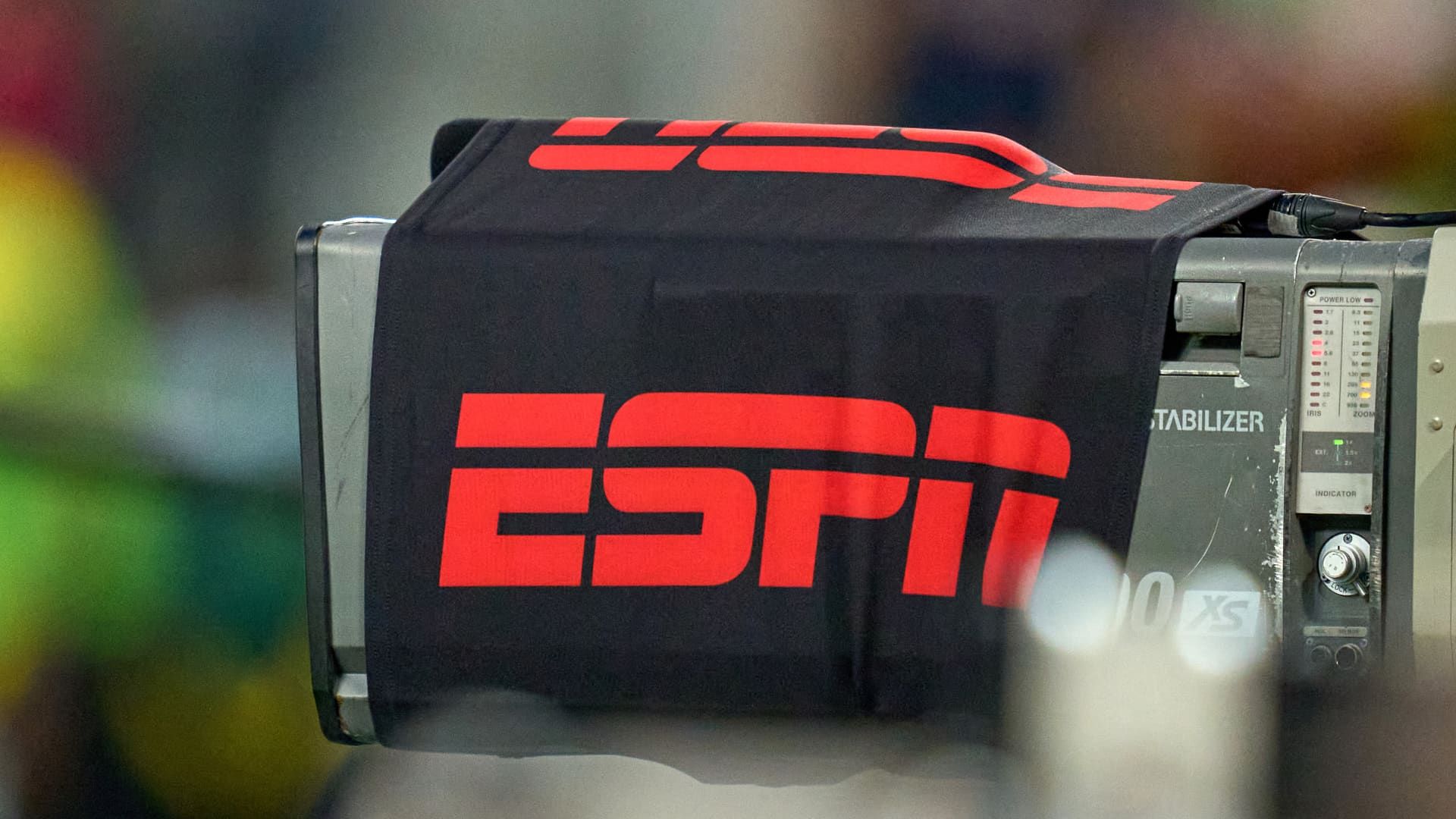Actor Jon Hamm playing Don Draper in Mad Men.
Michael Yarish | AMC | AP
Call Don Draper, Venu Sports may have a marketing problem
He Disney, Fox and Warner Bros. Discovery The jointly owned streaming service said Thursday it will launch this fall at a price of $42.99 a month. That's much more expensive than NetflixMax, Peacock or any other major subscription streaming service. It’s a lot less than YouTube TV, which costs $73 a month, or a standard cable package, but those offerings include a wide variety of entertainment content beyond sports.
Venu will give consumers access to a bundle of networks: ESPN, ESPN2, ESPNU, SECN, ACCN, ESPNEWS, ABC, Fox, FS1, FS2, BTN, TNT, TBS and truTV. Subscribers will also get ESPN+, which is planned to debut in time for football season. It does not include CBS or NBC, two networks that hold the rights to many sports, including college football and NFL games.
Venu’s theoretical user is someone willing to pay a hefty monthly subscription for a narrow segment of media: live sports, but not all live sports. The service is being marketed as a product for the so-called “never-connected” — a group of younger consumers who have not wanted to pay for cable because it’s too expensive, but who crave access to ESPN and other live sports.
It is not entirely clear whether this user base will materialize.
There are two major hurdles to Venu’s success. First, the total addressable market of users willing to pay $43 a month for some sports but not pay for cable may not be that high. Many subscribers who don’t have cable are content to watch highlights on YouTube and listen to commentary from their favorite influencers. According to a Kantar survey, cited by YouTube in its 2024 preview presentation, 54% of people would rather watch creators analyze a major event live than watch it in person.
On the other end of the spectrum, young NFL fans will have to purchase Peacock and Paramount+ (the streaming services tied to NBC and CBS) to access a full lineup of NFL games. They could also purchase a digital antenna to pair with Venu, but antenna adoption among younger viewers may be a bit mixed.
Other major sporting events, such as the ongoing Olympics, simply won't be available on Venu, because the Olympic broadcaster from Comcast NBCUniversal is not part of the service.
An existing player
The second problem is potentially bigger: there is already a product like Venu, and it may already be a better option than Venu.
For $60 a month, Echostar’s Sling TV offers the popular networks that come with Venu (ESPN, TNT, TBS, Fox, and ABC), but also includes NBC. Plus, it also includes CNN, Fox News, MSNBC, Bravo, USA, HLN, Discovery NFL Network, and a host of other networks (46 total, versus Venu’s 14). Plus, it comes with an introductory offer where consumers can pay just $30 for the first month.
Sinseeho | Istock | Getty Images
At the end of March, Sling TV had 1.92 million subscribers and it's not growing. It lost 135,000 customers in the first quarter, which was actually a smaller loss than the 234,000 subscribers it lost in the first quarter of last year.
At the end of 2021, Sling TV had 2.5 million customers, up from 2.7 million subscribers in 2019.
The company blamed the existence of other streaming services for its decline in the last quarter.
“We continue to experience increased competition, including competition from other providers of live linear OTT and subscription video-on-demand services, many of which are providers of our content and offer football and other seasonal sports programming directly to subscribers on an on-demand basis,” Echostar said in a filing.
In short, Sling TV (a more solid offering than Venu at about $17 more per month) has been losing subscribers for five years and never reached more than 2.7 million at its peak.
This is a big marketing challenge for Venu, which will have to convince consumers that it is worth signing up based on the strength of its brand and technology.
Or, it will hope that its $43-a-month deal lasts long enough for it to be able to take advantage of the $17 difference. The typical pattern for active network packages is that they start with an introductory offer only to increase prices. Venu hinted at this in its press release, telling consumers that they could lock in the $43-a-month price for 12 months from the time of subscription, suggesting that a price increase could be on the cards.
Venu wants to add more sports to the service over time, but that will likely drive up the price, making the value proposition an even tougher sell for those who never use wires.
A detailed view of an ESPN logo is seen on a television camera at Q2 Stadium in Austin, TX.
Robin Alam | Icon Sportswire | Getty Images
To further outdo Venu, Disney is already planning a flagship ESPN streaming service in fall 2025, which will include ESPN for a lower price than Venu.
Disney, Warner Bros. Discovery and Fox will argue that this is about maximizing reach, much like Apple's iPad mini did by slotting into the tech company's existing product line between its phones and larger tablets.. There may be an audience for Venu, and if there is, companies want to cater to it. Fox chief executive Lachlan Murdoch has already predicted the service could gain 5 million subscribers over the next five years.
But even 5 million seems like an ambitious goal, given Sling TV's struggles. Reaching that number will require a lot of marketing dollars.
And that effort can be so costly that it defeats the purpose.
Disclosure: CNBC's parent company, NBCUniversal, owns NBC Sports and NBC Olympics. NBC Olympics holds the U.S. broadcast rights to all Summer and Winter Games through 2032. NBC Sports broadcasts NFL games.










